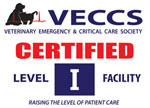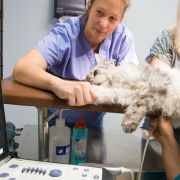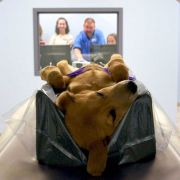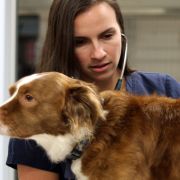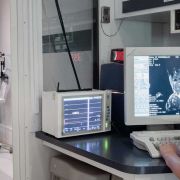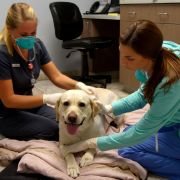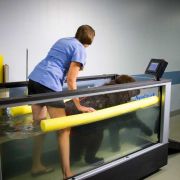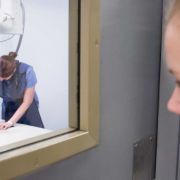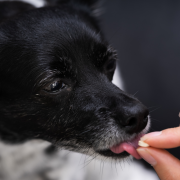Date:
By Alan Green and Lisa Olsen
There are times when even the most prepared of pet owners are faced with serious and sometimes life-threatening situations. Unfortunately, house fires are one of these situations. I am pleased to re-introduce Dr. Lisa Olsen, one of CVRC’s Board Certified Emergency and Critical Care specialists. It should be noted that CVRC has the only two board certified Emergency and Critical Care Specialists in the state of South Carolina and is one of an elite group of Level 1 Critical Care facilities in the United States.
In the U.S. alone, the National Fire Protection Association reported nearly 1.3 million house fires, causing nearly 16,000 civilian injuries and $11.6 billion in damage. These statistics fail to take into account the impact that house fires can have on pets. When faced with a house fire, recommendations include placing towels under doors, escaping through open windows or doors and immediately contacting fire response teams. However, our beloved pets lack the ability to take these life-saving actions on their own, thus are especially susceptible to the devastating potential of house fires.
The danger to pets centers around not only smoke inhalation, but heat exposure and burns and the impact of carbon monoxide accumulation. Cats and dogs have small airways that are more sensitive to toxin exposure and are unaware of the need to remain low to the ground during fires. Inhaled smoke can be extremely dangerous to the lung tissues, depositing particulate debris (soot and ash) within the lung tissues, causing inflammation and making breathing difficult. As smoke is inhaled, the carbon monoxide, which is a natural by-product of the fire, becomes absorbed into the bloodstream. This toxin binds to hemoglobin, the portion of our blood cells that normally carries oxygen, preventing oxygen from being carried throughout the body. In addition to the effects of smoke exposure, the heat produced by house fires can cause significant burns to the skin, whiskers, paw pads and the sensitive surfaces of the eyes as natural tears are evaporated.
Removing the pet from the house fire is the first step in effective management. If faced with a house fire, the first priority is to remain as calm as possible and prioritize getting yourself and your family (two-legged and, if able without any delay, four-legged) to safety. Many first response teams have the ability to provide life-saving oxygen supplementation for pets until the pets can be transported safely to a veterinary care facility. When in the care of a veterinarian, x-rays, oxygen and medications may be required. The duration of care is dependent on the severity of signs, with many pets requiring supportive care for several days following their initial exposure. Extensive burns can require prolonged and intensive management, with risks to the pet including severe dehydration, infection and discomfort, requiring in-hospital care. Pets that survive a house fire are still at risk for succumbing to illness in the days to weeks that follow, with some developing seemingly unrelated illnesses, such as seizures later in life. A smaller population of animals can develop residual permanent lung damage, if exposure is severe.
The most effective thing you can do to protect your pets is to minimize or eliminate the risk of fire hazards. The most commonly reported causes of house fires include overloaded wall sockets and electrical circuits, appliances left running without supervision, malfunctioning furnaces and storage of combustible materials in the home. As most house fires occur in winter, pay particular attention to wintertime hazards, including space heaters left on unattended, Christmas lights left on unsupervised and fireplaces left burning without supervision. Be sure your neighbors are aware of the pets you keep in your home and keep a window alert sign in easy view to alert first-responders to pets requiring rescue if called to your home in a fire. With proper prevention and preparedness, many pets can be safely removed from the home and cared for, ensuring they can be safely returned to their loving families to live happy and healthy lives.



